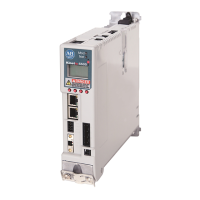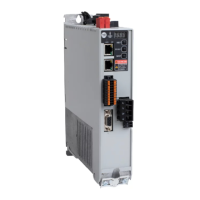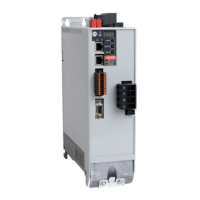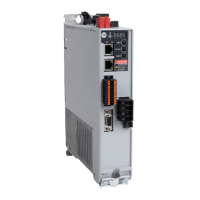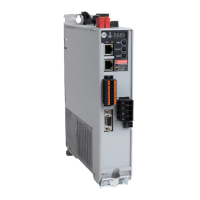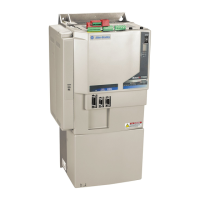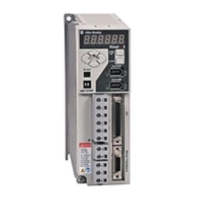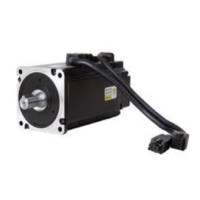Rockwell Automation Publication 2198-UM001M-EN-P - November 2022 149
Chapter 7 Troubleshoot the Kinetix 5500 Drive System
Logix 5000 Controller and
Drive Behavior
By using the Logix Designer application, you can configure how the
Kinetix 5500 drives respond when a drive fault/exception occurs.
The drive supports fault actions for Ignore, Alarm, Minor Fault, and Major
Fault as defined in Table 66
. The drive also supports three configurable
stopping actions as defined in Table 68.
See the drive behavior tables beginning on page 151
to see how the fault and
stopping actions apply to each of the exception fault codes.
You can configure exception behavior in the Logix Designer application from
the Axis Properties dialog box, Actions category. These controller exception
actions are mapped to the drive exception actions.
For Kinetix 5500 drives, only selected exceptions are configurable. In the drive
behavior tables, the controlling attribute is given for programmable fault
actions.
The INIT FLT xxx faults are always generated after powerup, but before
the drive is enabled, so the stopping behavior does not apply.
NODE ALARM xxx faults do not apply because they do not trigger stopping
behavior.
Table 66 - Kinetix 5500 Drive Exception Action Definitions
Exception Action Definition
Ignore
The drive completely ignores the exception condition. For some exceptions that are
fundamental to the operation of the planner, Ignore is not an available option.
Alarm
The drive sets the associated bit in the Motion Alarm Status word, but does not otherwise
affect axis behavior. Like Ignore, if the exception is so fundamental to the drive, Alarm is
not an available option. When an exception action is set to Alarm, the Alarm goes away by
itself when the exceptional condition has cleared.
Minor Fault
The drive latches the exception condition but the drive does not execute any exception
action.
Major Fault The drive latches the exception condition and executes the configured exception action.
Table 67 - Logix Designer Exception Action Definitions
Exception Action Definition
Ignore
The controller completely ignores the exception condition. For some exceptions that
are fundamental to the operation of the planner, Ignore is not an available option.
Alarm
The controller sets the associated bit in the Motion Alarm Status word, but does not
otherwise affect axis behavior. Like Ignore, if the exception is so fundamental to the
drive, Alarm is not an available option. When an exception action is set to Alarm, the
Alarm goes away by itself when the exceptional condition has cleared.
Fault Status Only
Like Alarm, Fault Status Only instructs the controller to set the associated bit in the
Motion Fault Status word, but does not otherwise affect axis behavior. However, unlike
Alarm, an explicit Fault Reset is required to clear the fault once the exceptional
condition has cleared. Like Ignore and Alarm, if the exception is so fundamental to the
drive, Fault Status Only is not an available option.
Stop Planner
The controller sets the associated bit in the Motion Fault Status word and instructs the
Motion Planner to perform a controlled stop of all planned motion at the configured
maximum deceleration rate. An explicit Fault Reset is required to clear the fault once
the exceptional condition has cleared. If the exception is so fundamental to the drive,
Stop Planner is not an available option.
StopDrive (version 31 and
earlier)
Disable (version 32 and
later)
When the exception occurs, the associated bit in the Fault Status word is set and the
axis comes to a stop by using the stopping action that is defined by the drive for the
particular exception that occurred. There is no controller-based configuration to
specify what the stopping action is; the stopping action is device-dependent.
Shutdown
When the exception occurs, the drive brings the motor to a stop by using the stopping
action defined by the drive (as in Stop Drive) and the power module is disabled. An
explicit Shutdown Reset is required to restore the drive to operation.
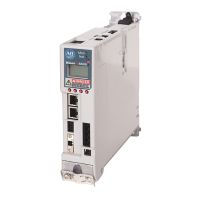
